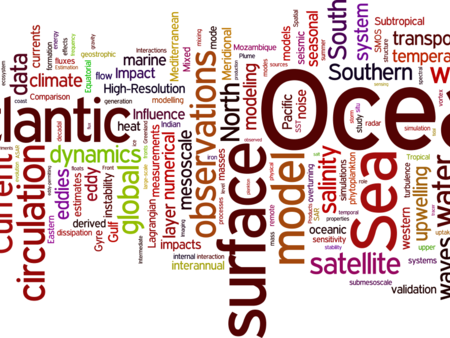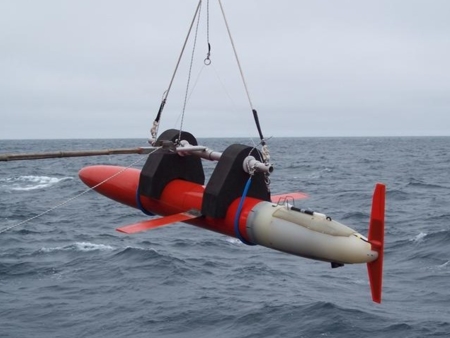Giulia Zerbini
Thesis subject: "MIxing and RestrAtification in the Bottom mixed-layEr : impActs of sUbmesoscale instabilities"
Directors: Jonathan Gula et Clément Vic
The meridional overturning circulation controls the fluxes of heat and carbon in the ocean on climatic time scales. At high latitudes, dense waters sink from the surface to the abyss, and are upwelled back to the surface on their equatorward journey to close the oceanic mass budget and circulation. While the formation of dense waters is well mapped and quantified, their upwelling from the seafloor to intermediate depths and up to the surface still suffers from large uncertainties. The classic view is that the upwelling of abyssal waters is driven by widespread and rather evenly distributed diffusion processes in the ocean interior. Over the recent years, an alternative view has emerged, with an intense upwelling occurring in a thin layer of well-mixed waters (bottom boundary layer, BBL) close to the seafloor topography, and a downwelling occurring in a thicker layer lying on top on the BBL (stratified mixing layer, SML).
Most of the energy fueling mixing in the BBL and in the SML is tidally sourced: tidal currents over uneven seafloor topography generate internal waves at tidal frequencies, or internal tides, which propagate in the interior and ultimately break. The breaking of internal tides triggers mixing of waters with different properties. The life cycle of internal tides is fairly well known under the assumption of a quiescent deep ocean featuring a steady stratification, i.e., not influenced by meso- (10-100 km) to submesoscale (0.1-10 km) processes. In the past decade, theoretical and process studies have shed light on submesoscale processes in the BBL, but we still miss a clear picture of their phenomenology and impact on the large-scale circulation. The goal of this project is to quantify the impacts of deep- ocean submesoscale processes on mixing and water mass transformation. The PhD candidate will investigate the deep-ocean submesoscale processes and their interaction with the internal wave field using cutting-edge realistic modelling with the CROCO model.
First, the PhD candidate will map the different types of submesoscale instabilities in the BBL of the Atlantic Ocean. This mapping will be based on quantitative diagnostics of key dynamical parameters. To this end, the candidate will use available outputs from a new numerical simulation of the Atlantic Ocean (GIGATL, dx < 1 km, 100 vertical levels, hydrostatic model), which is able to resolve some of the submesoscale processes in a fully realistic environment, i.e., including tides and high-frequency winds. This work will lead to a first-of-the-kind assessment of the geography of submesoscale processes basin-wide.
Second, based on the mapping described above, the candidate will focus on key regions for submesoscale processes and water mass transformation. In order to fully resolve submesoscale processes in the BBL, one needs to reach a sub- kilometer effective resolution. We will thus select one or two regions of interest to set up very-high resolution simulations (< 100 m, 300 vertical levels) nested into GIGATL1. This downscaling will allow us to investigate the sensitivity of the modeled processes to the model resolution, the numerical setup and the validity of the hydrostatic assumption. This work will lead to an unprecedentedly thorough description of the phenomenology of the instabilities, their co-existence with tidal processes and their impact on mixing and water mass transformation.







